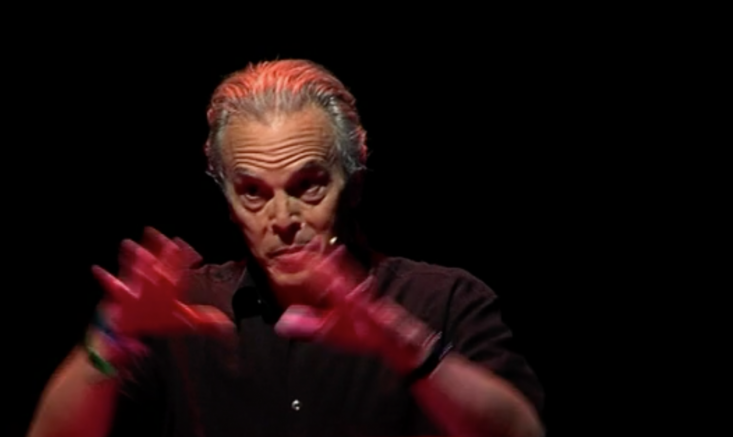Paul Pangaro

I’ve come across Paul Pangaro. It’s been a while since I’ve felt a genuine excitement and complete engagement with a person for what they are talking about, where they are coming from. Not since seeing Thomas Friedmans MIT video talk on his flatworld ideas in 2005, or Bruce Sterling’s incredible Spimes talks have I felt so absorbed by ideas and a persons way of thinking about things. These ideas may even be relevant in some ways to what I’m doing now, thinking about Smart learning dimensions. For example, Smart Spimes might be a way of documenting Smart incidental learning, maybe wearable, or in your phone. But, I digress.
Paul Pangaro was a protege of Gordon Pask. Pask, a psychologist and cyberneticsman from the 70’s, thought up Conversation Theory about how people learn, and his theory was likely intended for developing machine learning, or AI. Pask crossed my horizon after searching for a copy of Diana Laurillard’s Conversation Frameworkwhich is probably very relevant to how learning experiences are designed, and might therefore determine user experience. Though I didn’t find her framework online and must wait for the book, it references Pask, so now I know Pask, and in turn, Pangaro.
Pangaro, now a renowmed interaction designer, spent time with Pask in the 80’s. According to Pangaro, all the work he has done developing interaction design for software is wholly influenced by Pask. I can see why this might be the case. Pask’s idea is that there are only two types of learners – holists and serialists – this appeals to the logic behind designing a system of choice and actioned journeys, with user feedback initiations. Pask uses a concept of conversation (i.e. interaction) ‘organisation’, a way of systemising interaction processes which he calls ‘entailment meshes’, a mesh represents a number of associated concepts and the trail that they leave behind them as they form and reform, building knowledge. Though Pask is considered to be dialectic in his approach, the entailment mesh idea, to me at least, seems more dialogic, or certainly capable of mapping both kinds of interaction dialogue. Pangaro’s video lectures about entailment meshes bring them to life and the potential and purpose of them becomes clearer. Ive watched 3.5 of 5. I’ll likely watch them all again.
Thinking about entailment meshes more (and probably after I’ve done a lot more reading I’m sure), I might be able to use his way of thinking about ‘trails’ of interaction behaviour, associated with particular choices, sentiment or other influencers, to create schematics of how users are interacting with each learning experience. In part these will be representational, but would be actual data driven models (analytics, social insights style or other).
I’m still reading about Pangaro’s work, fascinated by his history, and by Thoughsticker, and by his mind process.
Links
- Paul Pangaro Vimeo selection
- Pangaro website section on Pask
- Laurillard on Knowledge Lab
- Laurillard on ResearchGate
- Another longer video from Bruce on Spimes just for the hell of it. Sadly I can’t find the original Frankfurt university video from 2005 that I watched, it’s no longer on the net.